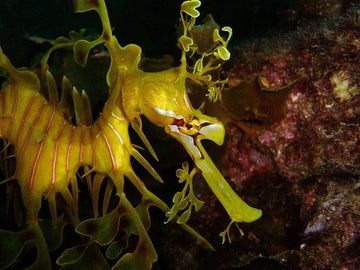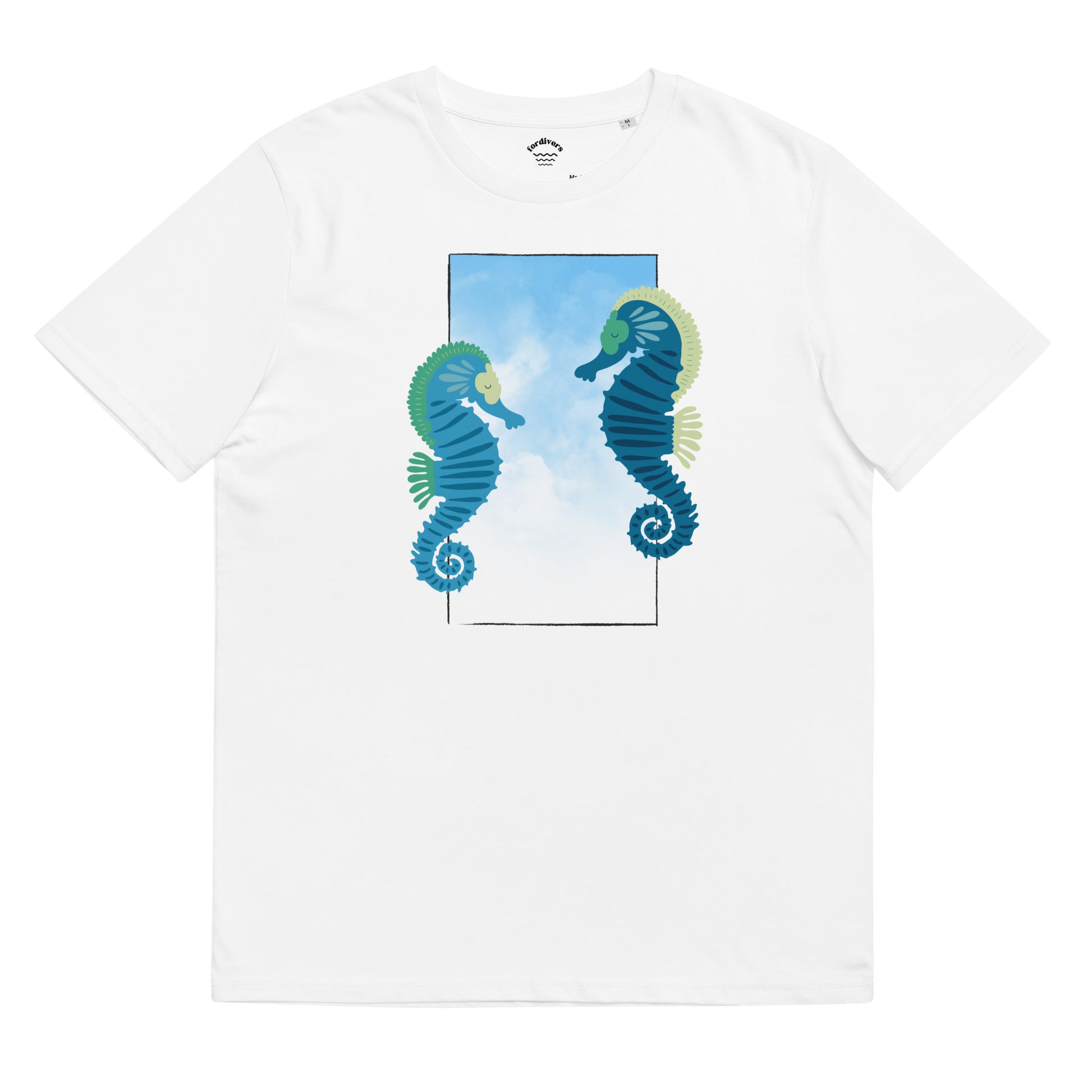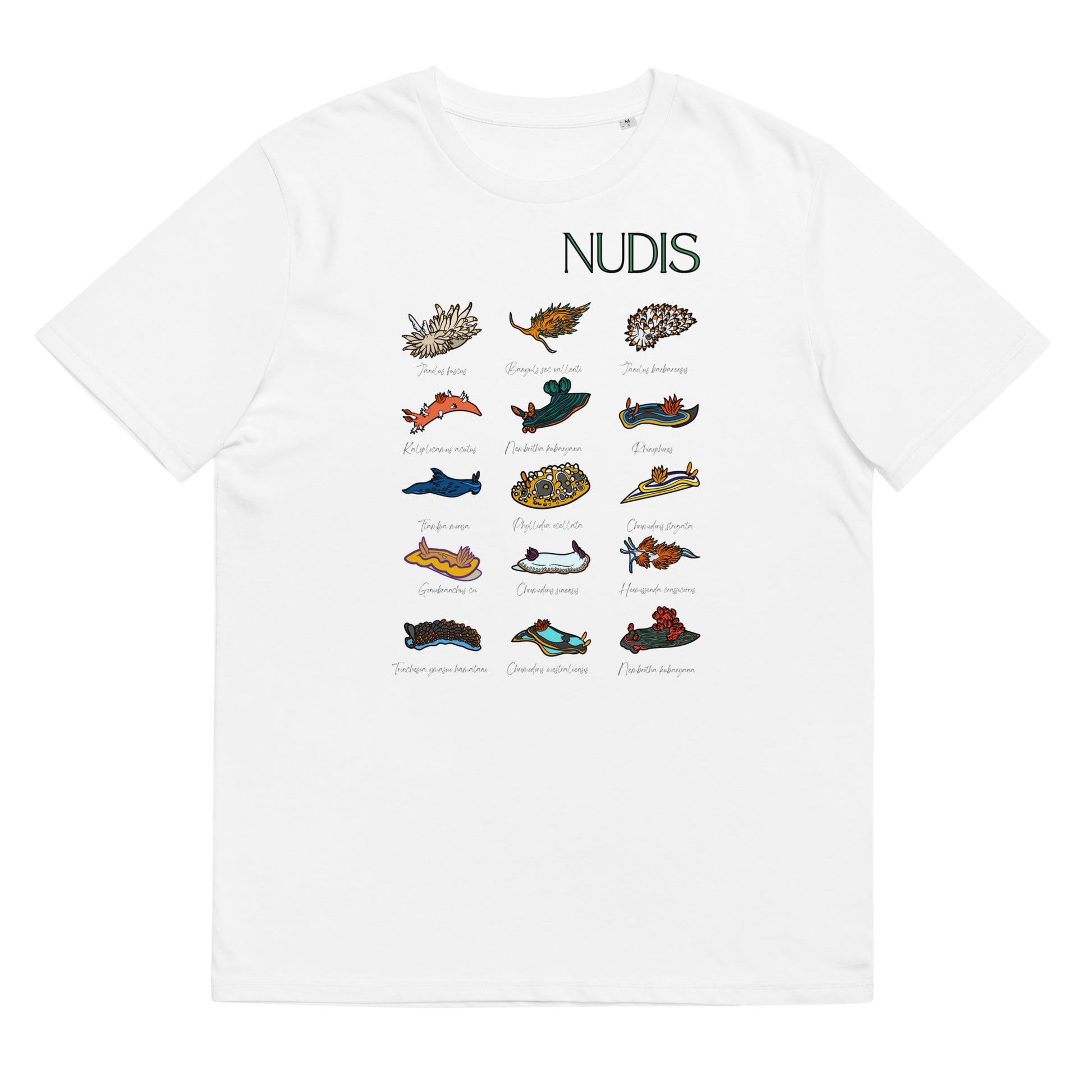Seahorses are among the most fragile, curious and mysterious ocean fishes. Revered in Etruscan and Phoenician mythology and especially in classical Greece, with significant presence in the theater and poetry. In fact, these fish appear in one of the most important works ever written, Iliad by Homer, where seahorses guide the chariot of Poseidon, god of the sea.
Seahorse T-shirts
SEE MORE SEAHORSE T-SHIRTSToday, 3,000 years later, seahorses are still tied to magical and supernatural powers regarding fertility, physical strength and feeding of infants ... "Powers" that are leading to many species of seahorses to almost to extinction by the TCM (Traditional Chinese Medicine).
These 10 portraits of seahorses will change your perception of these fishes forever and give you a much better understanding of that historic veneration through their intense looks that even seems to reflect personality or mood.
Longsnout Seahorse (Hippocampus ramulosus)
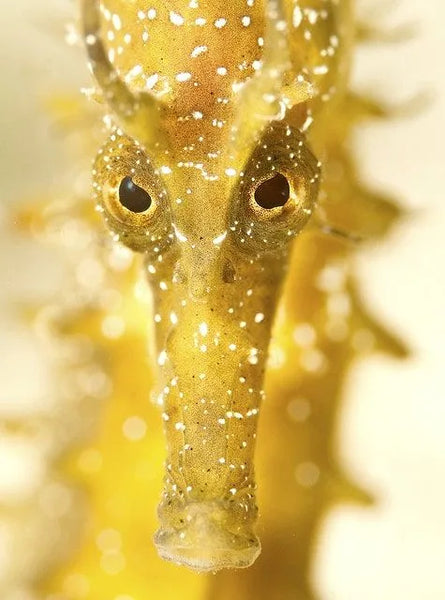
Longsnout Seahorse (Hippocampus ramulosus) is a very spectacular species of bony fish because of those fleshy spines that has behind his neck, completely different in each specimen. These sea horses have different color shades ranging from yellow-green to reddish brown allowing them to greatly mimic their environment in shallow areas (up to 20 meters deep) consisting algae and seagrass. We can find these sea horses from the Mediterranean Sea to the Black Sea and in the Atlantic from the Canary Islands to the Britain islands through the Azores. This seahorses can grow up to 12 centimeters and live up to 7 years feeding on small invertebrates and larvae.
Denise's pygmy seahorse (Hippocampus denise)

Pygmy Seahorse Denise (Hippocampus denise) is one of the smallest species of seahorse, measuring only 1.5 cm in length. It is a highly specialized fish as it only lives in one type of gorgonian, the Annela Reticulata, which it "mimics", even the polyps, to pass completely unnoticed by predators.
This seahorse can be seen (if your eye is trained enough) in the Coral Triangle reefs, mainly in Indonesia, Malaysia and the Solomon Islands but can also be seen in Palau, Vanuatu and the Australian Barrier Reef. Little is known of this species discovered less than 20 years ago having its main threat is in the collection for aquariums.
Spiny seahorse (Hippocampus histrix)
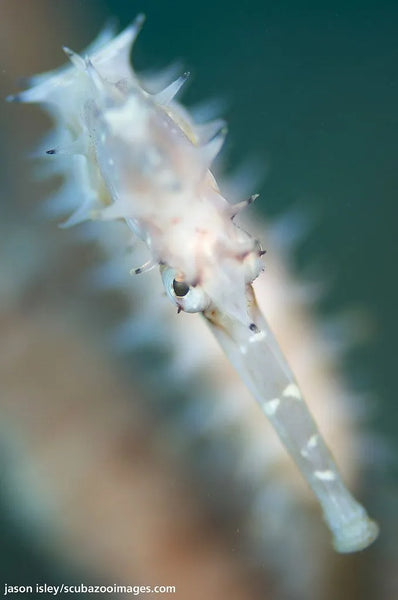
The spiny seahorse (Hippocampus histrix), also known as thorny seahorse, covers a high range of habitats in the Indo-Pacific, particularly in Micronesia, Indonesia, Japan, Malaysia and the Philippines but also in China, Vietnam and Hawaii. This seahorse, measuring up to 17 centimeters, inhabits areas of algae and soft corals around 20 meters deep. It is listed as vulnerable due to its use in Chinese medicine and its aquarium trade.


Big-belly seahorse (Hippocampus abdominalis)

The Big-belly seahorse (Hippocampus abdominalis) is the largest seahorse species that exist, reaching 32 centimeters in length. This species, which lives only in Australia and New Zealand, inhabits algae bays, estuaries and even mud funds, up to 104 meters deep, being one of the seahorses species that live deeper.
T-shirts designed by divers for divers
VIEW MORE T-SHIRTS FOR DIVERS
Their biggest threats are in fishing by trawlers, catches for medicinal remedies and sell for aquariums
Hippocampus taeniopterus
Hippocampus taeniopterus is a big seahorse (reaching 30 cm in length) that can be found in seagrass beds and around coral but also in sandy areas and muck diving sites. The Hippocampus taeniopterus have a large distribution area around the Pacific and Indian Oceans, from Japan through Bali, Hawaii, the Philippines, India and Pakistan.
Potbelly Seahorse (Hippocampus bleekeri)

The Potbelly seahorse (Hippocampus bleekeri) is an endemic fish of temperate waters of southeastern Australia and very similar to its neighbor the Big-belly seahorse. This seahorse inhabits shallow estuaries, muddy and rocky reefs off the coast to 35 meters deep. It is one of the largest seahorses known, as it can measure 30 centimeters in length. They usually have yellow skin but can adopt brown and purple tones or black spots mixed with other lighter. Like most seahorses, the Potbelly seahorse has in the captures for sale to aquariums and use as a remedy in traditional Chinese medicine its main threats.
Maned seahorse (Hippocampus guttulatus)

The Maned seahorse (Hippocampus guttulatus) also known as Mediterranean seahorse, is the most common seahorse species in the Mediterranean Sea but can also be found in the Black Sea and the Atlantic Ocean to the Suez Canal. This seahorse, which can reach up to 15 centimeters and live up to five years, is in danger of extinction in the coasts of Turkey and listed as vulnerable in Ukraine and Georgia.
Leafy seadragon (Phycodurus eques)

The leafy sea dragon (Phycodurus eques) is not a seahorse although it belongs to the same family, the Syngnathidae, but it is so extraordinary that we had to include it among these beautiful portraits. The leafy sea dragon lives in sandy and vegetation bottoms of up to 50 meters in the waters of southern Australia. The amazing thing about this animal is its capacity for mimicry, which it uses both to avoid predators and to hunt, pretending to pass unnoticed amongst the leaves and stems of marine plants. This fish is also suffering from human pillaging for treatment in traditional Chinese medicine and is also torn from its habitat for aquarium decoration.
Sources:
Arkive, Fishbase, Wikipedia, Lembeh Resort, IUCN Red List, Project Seahorse, Mare Nostrum

